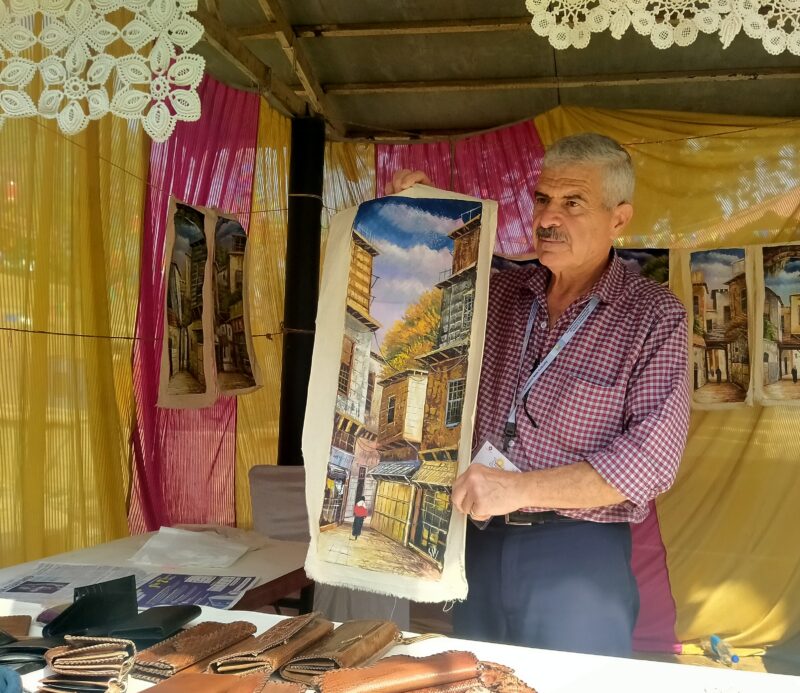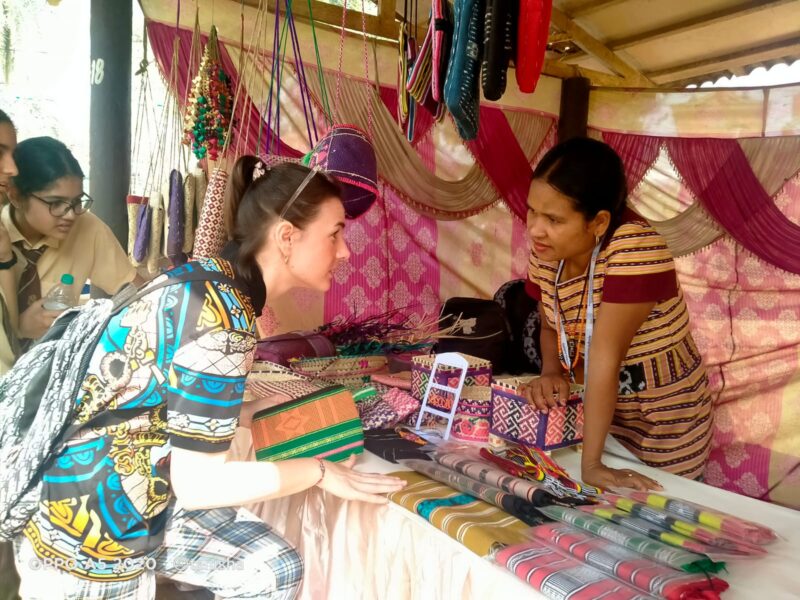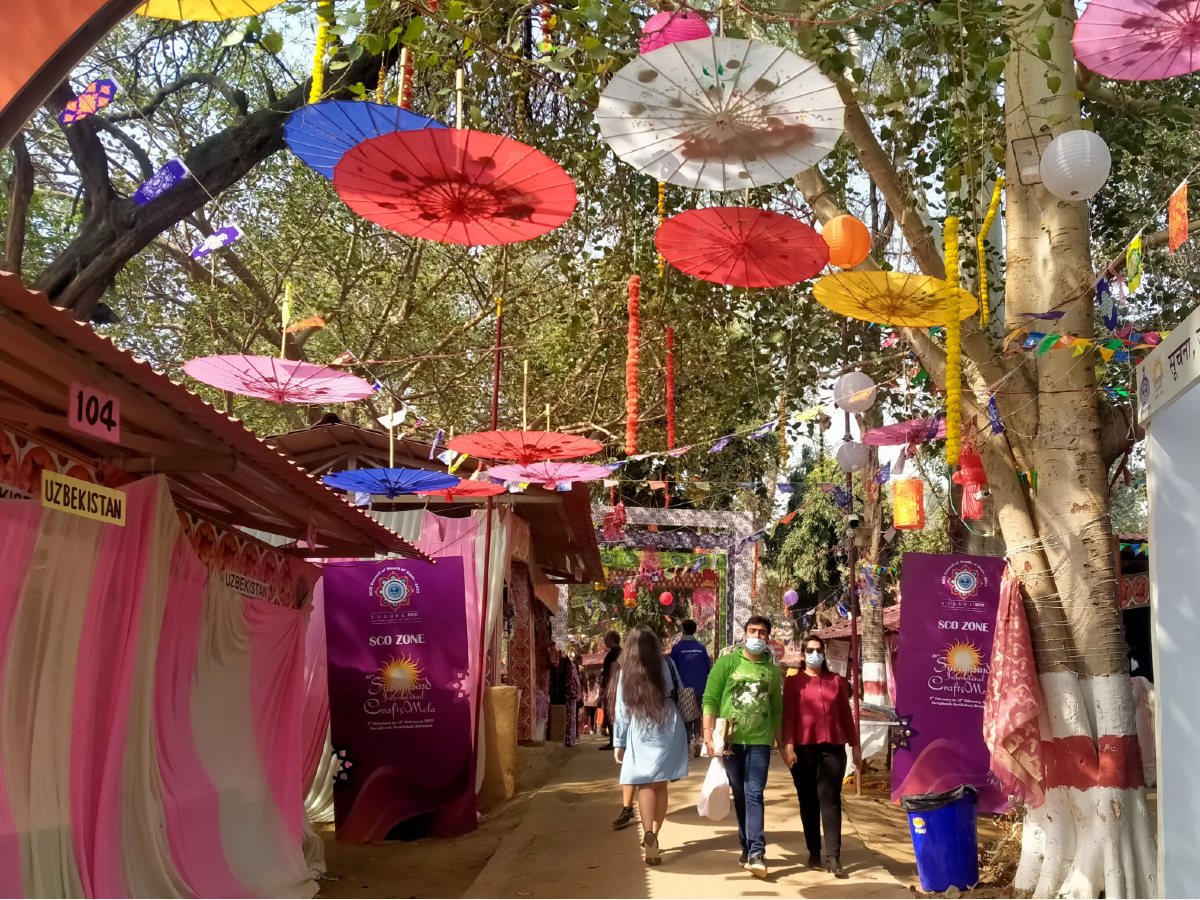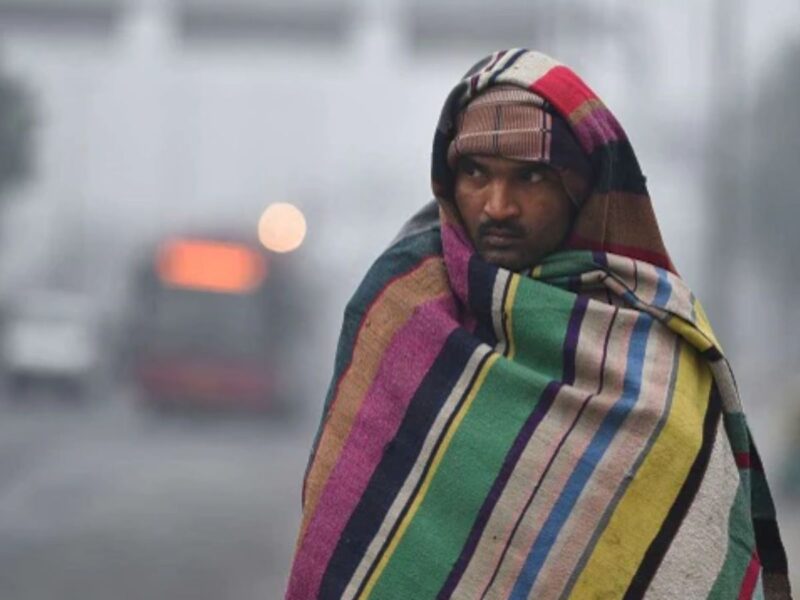Sri Lankan artisan Pradeep is busy with a visitor explaining the numerous health benefits of cutlery made of coconut shell. After a minute, Pradeep manages to sell a set of spoons to the visitor.
“This is the first time I have had the opportunity to come to India and sell my products in this festival. I feel extremely happy and am also content with the sales,” says the 28-year-old, who has come to the Surajkund Mela, which is being held in Faridabad, Haryana from February 3 to 19.
“Coconut trees can be found in abundance in Sri Lanka and every part of it is used. Coconut is the base in nearly everything cooked and its shell is used to make bowls, spoons and jewellery. Crockery made out of coconut shells are sanded and hand polished with a natural, food-safe bees wax,” he explains.
Pradeep feels people have got more conscious about environment but they are still unaware of the range of possibilities. His own products have caught many customers by surprise.
“People nowadays understand the importance of being eco-friendly. They feel responsible for the nature and think twice before harming the ecology. When I tell the visitors that these items are made purely out of coconut, they first stare at me in astonishment and then don’t leave without buying,” adds Pradeep.
Leather hunting
His crockery on display includes spoons and bowls. The prices vary from item to item. It is anywhere between Rs 200 to Rs 1000.
Unlike Pradeep, Syria-based Iskandar Istafan is attending Surajkund Mela for the fifth time. But like Pradeep, he is grateful for the opportunity it provides to showcase his leather products.
“Syria has immense animal wealth. For hundreds of years, our craftsmen have worked at the natural leather industry. It is a profession that we have inherited from our ancestors. My products are an ode to Damascus whose artisans have left their unforgettable touch on the world of leather industry.”
Istafan, who has been working in the natural leather industry for 40 years, learnt the art from his father and grandfather, who used to work at the Hamidiyah Souq Market, the largest market in Syria.

“I have made sure that I teach it to my wife and children. Leather industry [there] involves handicraft and unlike machinery products, hand-work needs patience and accuracy to reach a certain level of perfection to compete in the market,” explains Istafan.
Pointing at his products that include stool, leather bags and purses, Istafan says they are handmade with the intricate patterns done by women of the house.
There are paintings on display as well which one of the visitors seemed interested in buying. It cost Rs 2,000 while a purse that he displayed cost Rs 1,500.
Colours of Indian states
Shankar, 30, an artisan from Andhra Pradesh says that the impact of pandemic on the fair has been huge.
“Sales have decreased compared to previous years. People still don’t have the buying power they had before the pandemic. We are not really satisfied with the sales,” says Shankar.
Shankar is folding six yards of saree that he was showing to a visitor just a while ago. He has been accompanying his mother to the mela for the past 25 years.
Shankar’s mother Suneetha, 63, who is sitting on the floor of their stall built on a slope, says, “Any fabric, be it cotton, jute or silk in its purest form is expensive. It is not in everyone’s budget to buy but that’s not a concern for us. I know the customers very well and those who wish to wear one-of-a-kind pattern and pure fabric, don’t think much while buying sarees.”
They call the sales satisfactory but not good enough to make a profit.
“We are making around Rs 10,000 per day which is unprofitable as we don’t have enough margin in fabric, especially pure fabric,” she says.
While the fair is back after a hiatus, the enthusiastic buyers are yet to return.

Shankar adds, “We have only pure silk sarees which are vegetable dyed and no chemicals are used in the process. Also, the intricate patterns have been done with hands by local artisans from the village.”
The price range of their sarees is between Rs 1,500 and Rs 50,000.
“We have three exclusive patterns of the same silk saree which costs the same. We hope people come and buy. This festival is a wonderful opportunity for us,” he adds.
Silk from Assam
Azu, 26, is an artisan from Assam who is finding it a little difficult to interact with the foreign visitors. There are schoolkids who are helping her with communication.
“Assam’s silk is famous in the entire country. Our state is home to several types of silks, the most prominent and prestigious being muga and eri silk,” she says, showcasing her products.
“These dupattas are pure muga silk. Muga silk has natural golden sheen while eri is a mildly warm silk. Muga is the most durable fabric and hence, its demand is always high. The foreigners absolutely love the fabric of our country as its purity is what distinguishes it.”

Azu is interacting with a foreign visitor, she can be seen trying her best to explain the quality of fabric.
“Some people try to bargain here. Hand-crafted items are not easy to trade because of several reasons including the cost of labour, transportation and storage. We can’t produce them in bulk as they are expensive and we can’t afford storage for a long time,” explains Azu, who manages to make Rs 15,000 per day at the fair.
The lip-smacking food
Food court of any fair is an attraction and the Surajkund Mela is no exception. One can relish the diverse flavours of Indian states from Rajasthan’s daal-baati-churma to Kashmir’s kahwa or the evergreen street food like aloo chaat, bhelpuri, pav bhaji, momos and more.
Neeta Gupta, a visitor from Gurugram excitedly says, “I loved the Rajasthani thali, bajra roti, choormaladdoo and many traditional dishes at the Rajasthani corner.”
Neeta states she has been coming to the mela for the past five years and every time, she is amazed by the colours and vibe that the mela offers.
She points out, “Just as we enter the premises of the mela, it feels as though we have come to a different world where diverse cultures are coming together to celebrate. One can dance and sing his heart out at this famous mela.”
Echoing similar experience, Anuj Sharma of Delhi says, “I danced on dhol a while ago. You just can’t control yourself when you see such enthusiasm and cultural ethos of our country.”
Anuj, who came to the mela with his family and friends, is experiencing this festival for the first time.
“I appreciate their management here. Lakhs of people coming to attend the mela can turn into chaos but the way the system is functioning is commendable. From medical facilities to the availability of water and transportation — everything is smooth and hassle-free.”
Besides food and art, some desi and foreign colours can also be witnessed at mela.





